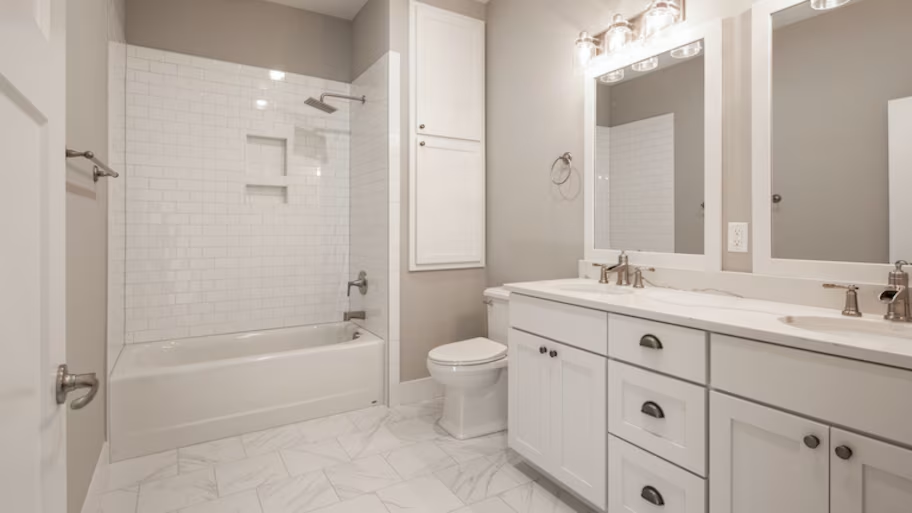
Curious how much a shower remodel costs? From new fixtures to full installations, we have the prices you need to know to establish a shower remodel budget.
Keep your bathroom remodel project in check


Remodeling your bathroom adds quality and pleasure to your daily life—and boosts the value of your home. You'll have a smoother reno process if you know which steps to take and what supplies you need. The average cost to remodel a bathroom is $12,100, but with this bathroom remodel checklist, you can better stick to a budget, achieve your ideal design, and ensure the project timeline stays on track to help save you as much money as possible.

Focus on the main functions of your bathroom as you determine what design elements are most important.
Gather inspirational bathroom photos and layouts and save them in one place. Note any details and designs you particularly like, such as shower styles, floor layouts, wall colors, and vanities that catch your eye.
As you form your design, consider the function of your space.
Do you need lots of storage for linens and personal products?
A larger bathtub for kids?
A relaxing shower for guests?
Hire a bathroom designer or sketch a detailed plan for your bathroom remodel to help guide your project.
Homeowners typically spend between $6,600 and $17,600, depending on the size of the bathroom and scope of the remodeling project. Keep in mind that, on average, homeowners recoup approximately 70% of their bathroom remodel cost in their home’s resale value. Before you remove your tiling or rip out the shower, it’s important to understand what you’re willing and able to spend on a bathroom remodel.
As you account for each element and the labor associated, create a spreadsheet of what each item—and the total project—will cost you.
Consider what pieces are must-haves, such as:
Do you want a new faucet or a whole new vanity and sink?
Are you adding a bathtub or overhauling the shower?
Which bathroom accessories and hardware need to be replaced?
Are you installing new lighting fixtures or outlets?
There are dozens of components to consider when tackling a bathroom renovation. Here's a full bathroom remodel checklist that includes each element. Mark which ones you'd like to upgrade, add, or remodel.
Floor plan: Will you change the footprint or keep it the same?

Flooring type: Which materials would you like to use? Tile, laminate, vinyl, linoleum, stone, and concrete are all durable options for bathroom floors.
Do you want your new floor to have radiant heat?
Does the subfloor need to be replaced?
Will your project require baseboards and shoe molding? Or underlayment, adhesive, or grout required for a tiling project?
Are you updating paint, wallpaper, or tile?
Will you be adding or replacing any windows?
Do the doors and hardware need updating?
Are you adding insulation?
Will the ceiling height change?
Are you resurfacing the ceiling (adding drywall or knockdown)?
Are you planning to replace the vanity and countertop?
Sink: One sink or two? What type of sink?
Are you adding storage (drawers, cabinets, shelves)?
Do hardware or bathroom accessories need to be updated? This could include a faucet. Hand towel ring or bar, soap ledge or dispenser, or handles and pulls.
Are you planning to update any mirrors (above the sink, magnifying or makeup mirror)?
Are you upgrading or adding a toilet or bidet?
Toilet paper holder: Freestanding or wall-mounted?
Do you need accessible features like a grab bar?
Shower: Do you want a tub and shower combination or just a shower?
If you’re adding or upgrading a bathtub, what style and function do you want (jet, freestanding, etc.)?
Do you need to hang up a new shower curtain rod?
Would it be helpful to add a shower seat or chair?
Does the new tub or shower format require tiling? Or do you want to add in fresh floor and wall tile?
Do tub and shower drains need to be moved or added?
Showerheads: Do you want a wall or ceiling-mounted showerhead?
Towel bars: Do you want them heated? How many do you want?
Are there any other accessories like a robe hook or grab bar near the shower that would make life easier?
Lighting: Are you opting for functional lighting and dimmers throughout the space? These could include:
Recessed lighting
Sconces by your mirror
Lighted medicine cabinets and mirrors
Hanging lights
Outlets: Consider where you use outlets the most, such as for a hair dryer or electric toothbrush. What will offer you the most convenience and function?
Can existing wiring be used or do you need new wiring to accommodate lighting or outlet updates?
Can you use existing lines for your project or do plumbing elements need to be rerouted or added to accommodate your design?

Linen and toiletry storage: Do you want to add any recessed shelving?
Would you like more cabinets or shelves?
Does your bathroom require more ventilation?
What is the most functional and cost-effective approach for upgrading the ventilation?
Once you know what items to include in your bathroom renovation, choose the model, styles, and finishes for each piece—from your flooring to your vanity.
Make a list of all the items you need (mark each one off as you purchase it).
Check on the availability of materials and shipping time.
Order as much as possible in advance, before your project begins.
Some items, like your new vanity, can be ordered right away, while others may need to wait (such as measuring for your solid surface countertop until after the vanity has been installed).
Plan the step-by-step order of your project along with estimated time frames to help your remodel run smoothly. Be sure to add buffer time for unforeseen issues, such as discovering corroded plumbing or mold behind a wall.
Follow this general sequence of events for a smooth project:
Design and plan
Demo
Framing
Plumbing rough-in (including the toilet rough-in measurement)
Electrical rough-in
Drywall
Tile, vanity, shower, bath, and countertop installation (depending on design)
Flooring
Paint
Final fixture installation (toilet, faucets, electrical outlets, etc.)
A few other tasks that need to be completed in a specific order include:
Install new flooring before you paint, depending on the finishes.
Backsplash tiling should be done after the counters are installed.
Place final fixtures like toilets, outlets, lights, and faucets.
Electrical and plumbing work is best left to the pros to avoid personal injury and damage to your home. If you develop a leak while plumbing, your bathroom could experience water damage—resulting in more repairs and having to hire a plumber anyway. If you wire an outlet incorrectly, someone could get hurt. Working with a contractor can save you money and prevent issues in the long run. Not to mention, they’ll handle the permits for your project.
Determine what you can do yourself and where you should lean on the experts.
Consider the time it takes to learn or do the task yourself and any issues you might run into.
Partner with a professional contractor to ensure your bathroom’s plumbing, ventilation, and other systems are up to code and in good working order.
Save on costs by helping the contractor with prep work and clean-up.
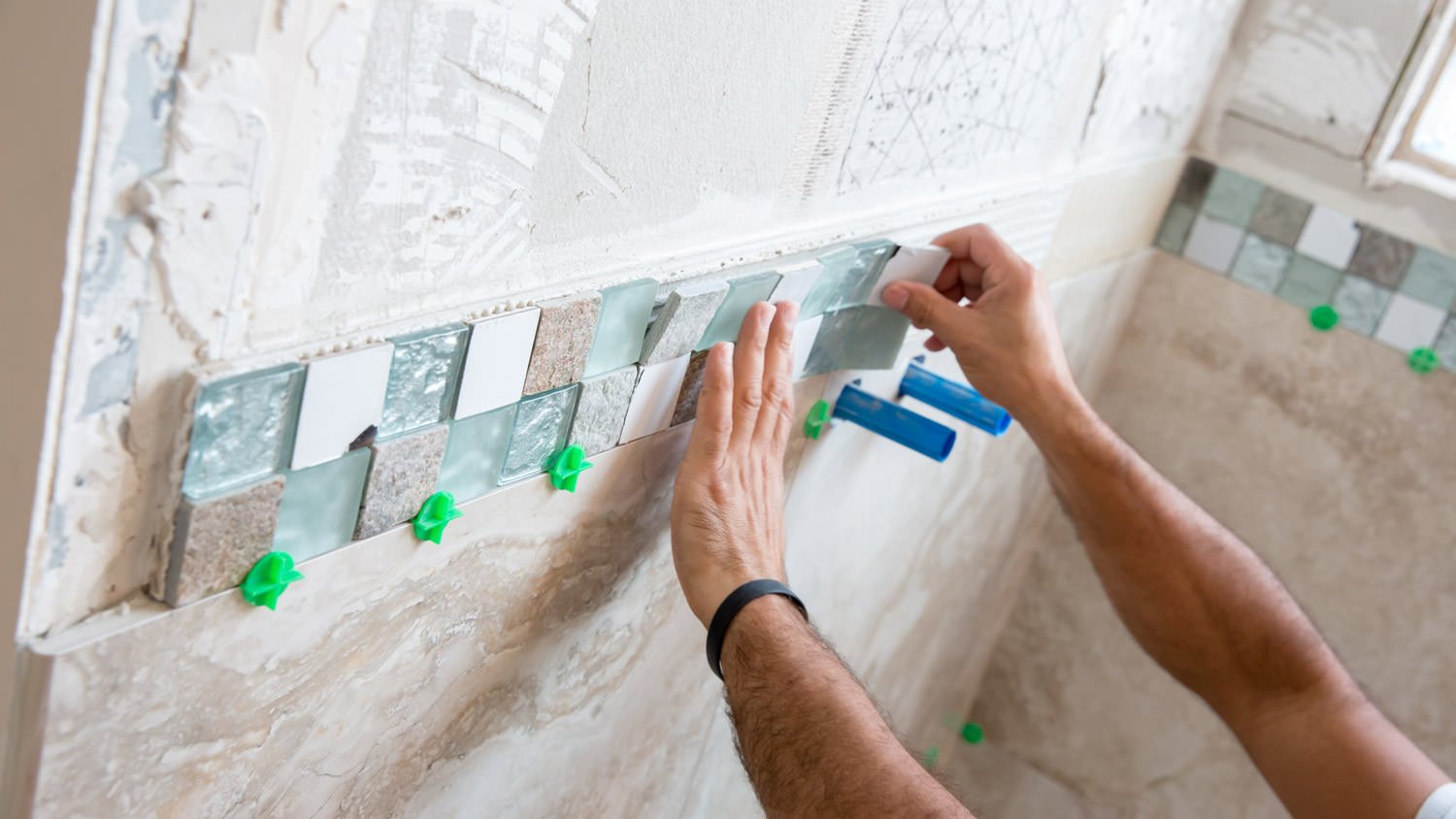
Not all contractors are available right away, so be sure to contact them early in your process. Here’s a list of the contractors to consider:
Bathroom remodeler (to manage the entire project)
General contractor (may be able to manage the entire project)
Capture a few photos from different angles of your current bathroom, so you can see the full fruits of your labor and investment once the project is done.
Your bathroom remodel may require a permit, depending on how extensive the work is.
Check with your municipal building department to determine if you’ll need a building, electrical, or plumbing permit. If you hire a contractor, they may take care of the permit process for you.
If your home was built before 1980 and you plan to demo walls or the ceiling, schedule lead and asbestos tests.
While the full list of things you need for a bathroom remodel depends on your exact plans, here are the basic tools you need to tackle the project yourself.
Remember, it’s best to leave the plumbing and electrical work to the pros—along with any other pieces you’re not confident in. While handling the whole remodel yourself can seem exciting, damaging your space or injuring yourself isn’t worth it. Plus, by hiring out difficult tasks, you can find comfort in knowing your shower won’t spring a leak and your light fixtures work flawlessly.
Gloves
Dust mask
Safety goggles
Putty knife
Drop cloths
Pliers
Hammer
Reciprocating saw
Utility knife
Shop-vac
Plastic bags
Ear muffs
Circular saw
Hand saw
Nail gun and nails
Level
Pencil
Tape measure
Combination square
Lumber
Water pump pliers
Pipe wrench
Basin wrench
Strap wrench
Closet auger
Toilet
P-trap
Shower or bathtub
Sink and faucet
Screwdriver
Power driver
Wire crimpers
Fish tape and poles
Tape measure
Flashlight
Pliers
GFCI outlets
12-2 gauge wiring (for outlets)
14-2 gauge wiring (lights)
Junction boxes
Electrical tape
Wire nuts
Light switches
Light fixtures
Vent and tubing
Level
Utility knife
Saw (chop, miter, wet, tile, or jig)
Chalk line
Grout or caulk
Laminate, tile, linoleum, vinyl, stone, or concrete
Drywall knife
Utility knife
Drywall t-square
Drill
Jab saw
Sander
Puddy
Drywall
Drywall tape
Joint compound (mud)
Painter’s tape
Drop cloths
Paint stirrer
Paint key
Hammer
Paintbrushes
Roller
Roller extender
Sandpaper
Primer
Paint
Nail gun
Sander
Caulk
Nails
Vanity
Countertops
Shower or backsplash tile
Shower doors
Grab bars
Mirrors
Tackle each piece of the project in a logical order, avoiding rework and damage. Coordinate with your contractors and communicate progress along the way. Make adjustments to your plan as needed, and enjoy the process of adding beauty and function to your space.
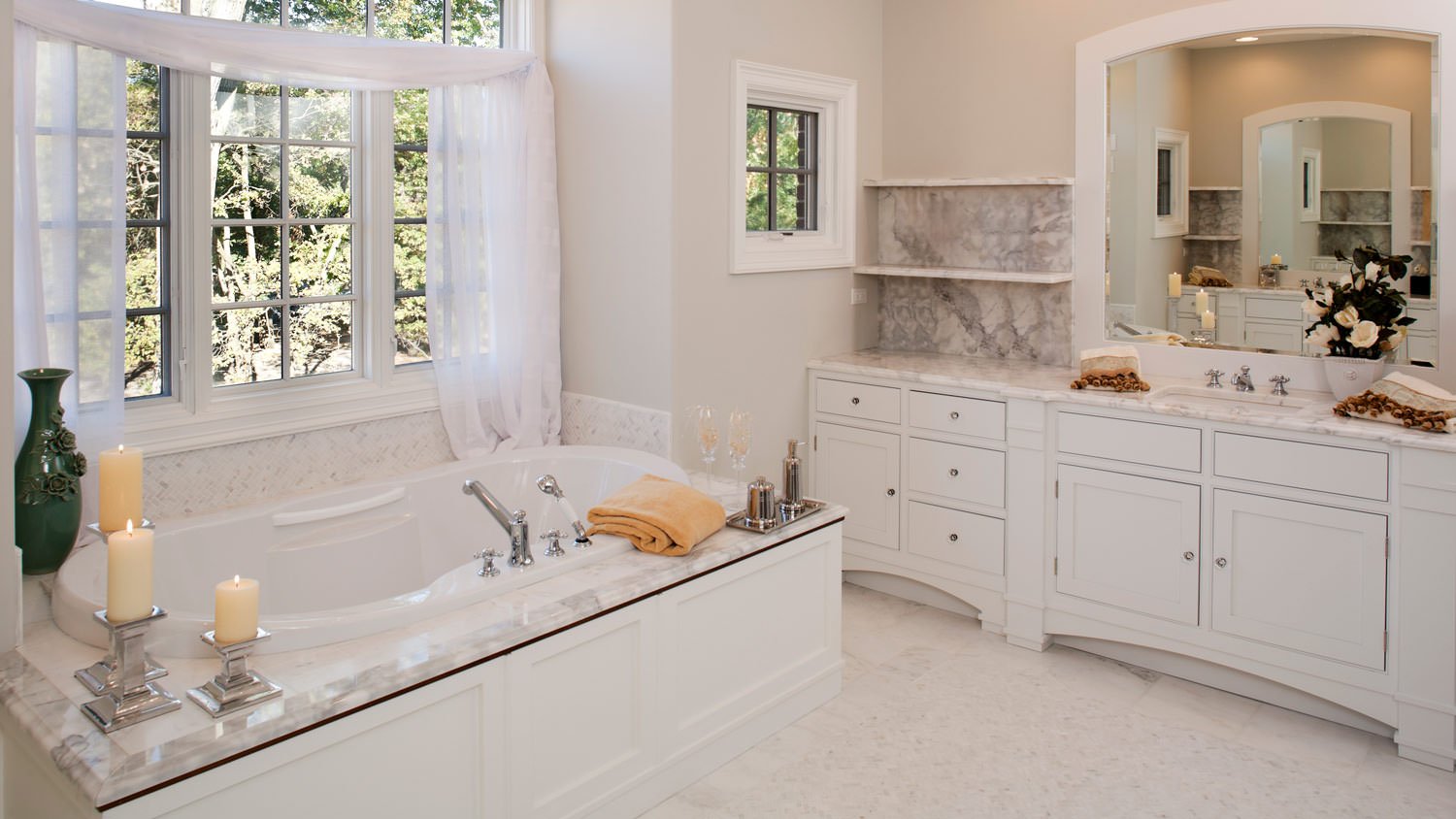
Put the final touch on your bathroom remodel with your decor and bathroom basics.
Shower curtain
Bath mat
Hand towels
Bath towels
Washcloths
Washcloths
Soapdish or dispenser
Toothbrush holder
Window treatments
Plants (indoor or faux)
Wall art
Shelving
Organizer bins and baskets
Bathtub tray
Stool
Wastebasket
Plunger
Toilet bowl brush
Bathroom spray
Miscellaneous decor
Snap several photos of your newly renovated bathroom to showcase the final results of your hard work and investment. Share your before-and-after photos with family, friends, and social media to help celebrate your success. Toasting your bathroom remodel can motivate you for your next home renovation project.
Remodeling a bathroom costs between $6,600 and $17,600 on average. The drastic variation in prices is primarily affected by the size of the bathroom, how much you change, and the quality of the materials. A complete bathroom remodel project using luxury materials can easily cost upward of $30,000. If you increase the size of your bathroom, expect to pay at least $5,000 just to update the electrical and plumbing systems.
Many experienced DIYers can handle simple tasks like replacing bathroom vanities, faucets, medicine cabinets, or flooring. However, a contractor will produce more professional-looking results, and you may want to avoid the time, messiness, and difficulty of upgrading your bathroom. Pros can often source materials at a lower cost than you can, too.
More advanced projects, such as installing a shower or moving walls and plumbing, should only be handled by a local bathroom remodeler to ensure you do not harm yourself or your home.
From average costs to expert advice, get all the answers you need to get your job done.

Curious how much a shower remodel costs? From new fixtures to full installations, we have the prices you need to know to establish a shower remodel budget.

Building a guest house is one of the largest home projects and involves several different professionals. Learn about the cost to build a guest house and where you can save.

How much does a showerhead cost? Whether your current showerhead is broken or you want more pressure, you have many options to upgrade your showering experience. Learn the average price for various showerheads, features, and more.
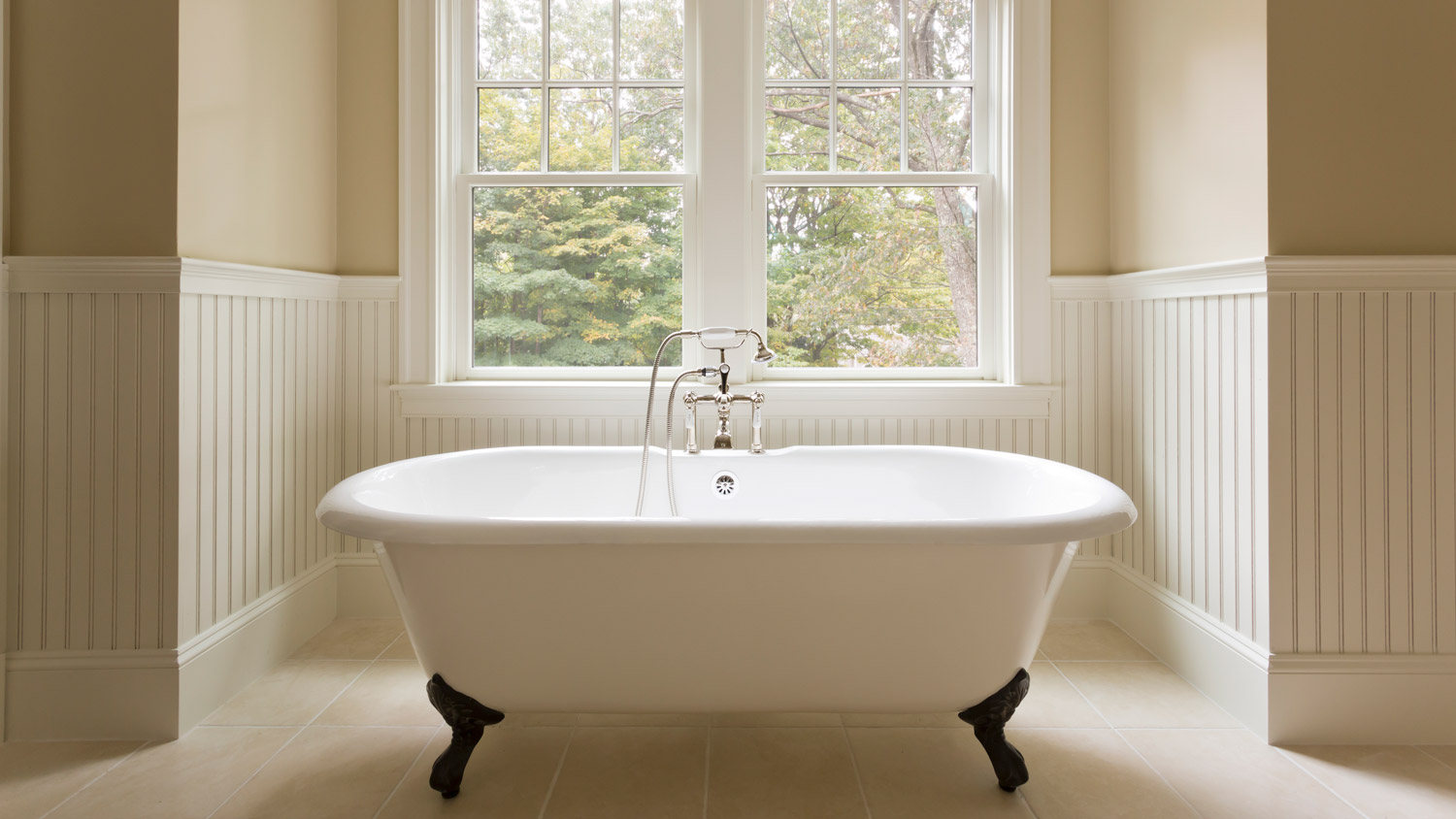
An updated bathtub can give a bathroom a whole new look. Find out how much it costs to replace a bathtub in San Francisco, CA, including prices by type and labor costs.
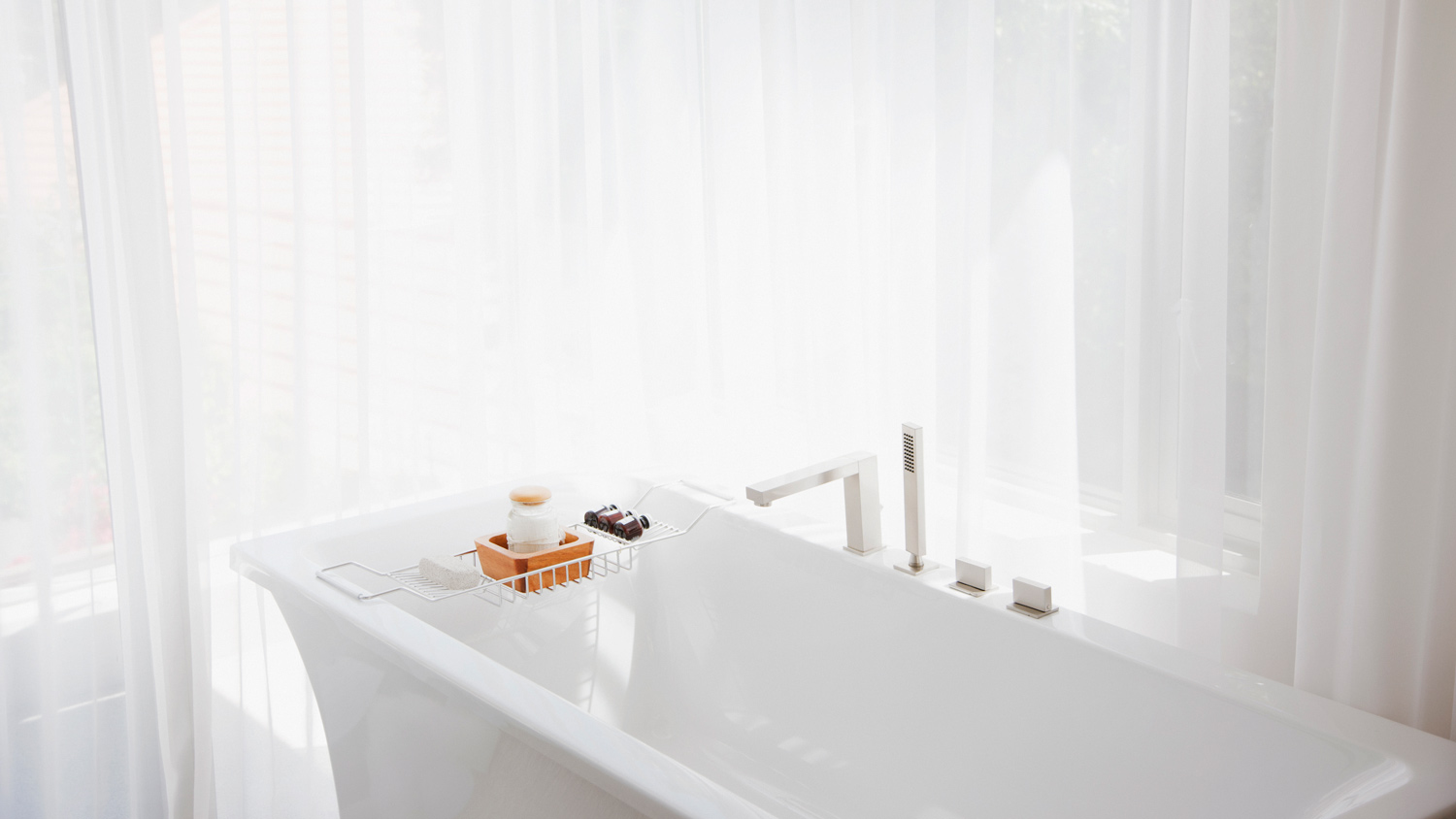
An updated bathtub can give a bathroom a whole new look. Find out how much it costs to replace a bathtub in Kansas City, MO, including prices by type and labor costs.
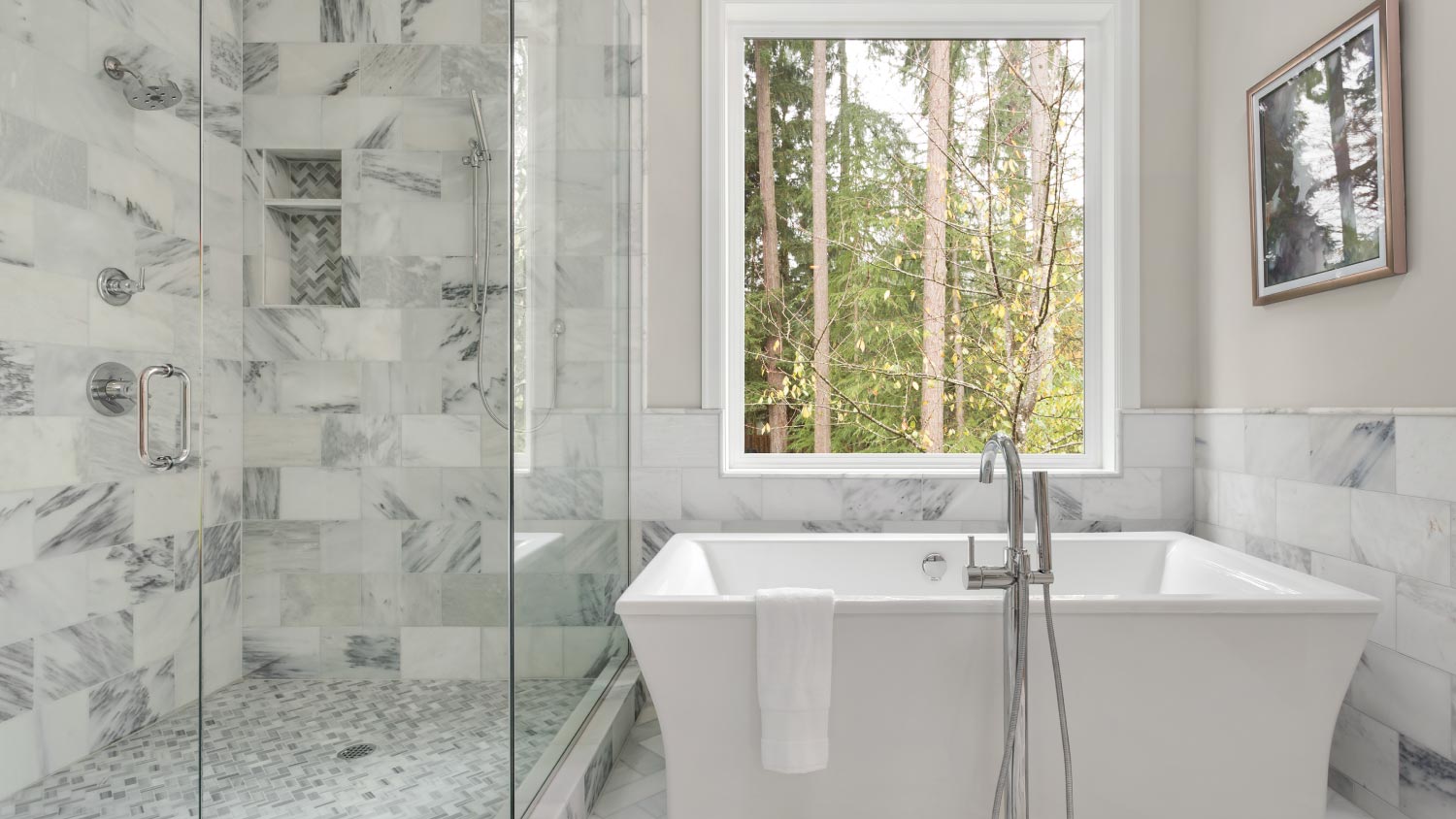
An updated bathtub can give a bathroom a whole new look. Find out how much it costs to replace a bathtub in Atlanta, GA, including prices by type and labor costs.